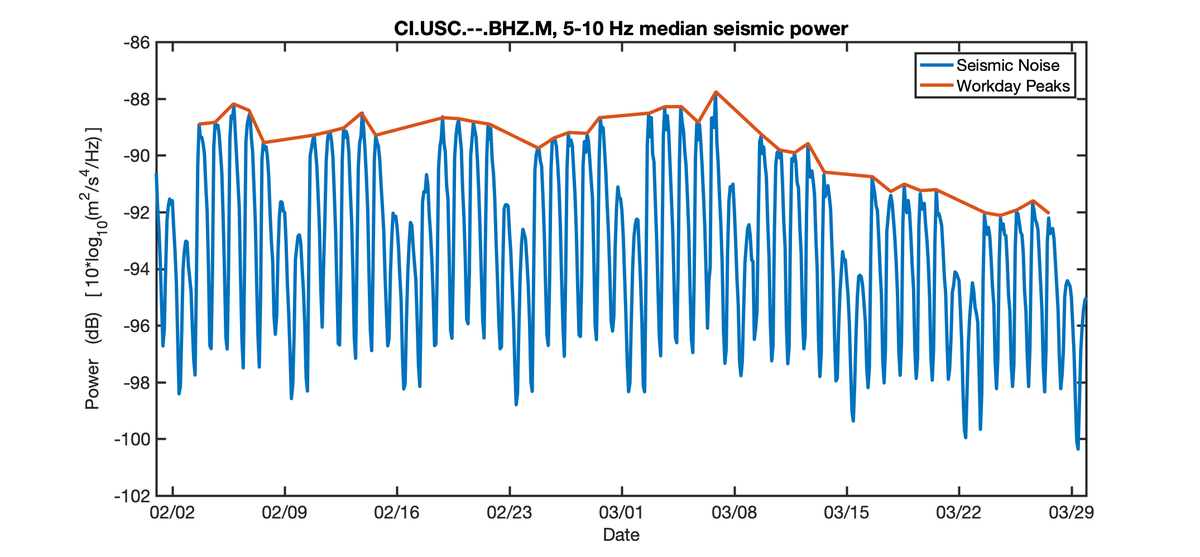'If lockdowns continue in the coming months, city-based detectors around the world might be better than usual at detecting the locations of earthquake aftershocks, says Andy Frassetto, a seismologist at the Incorporated Research Institutions for Seismology in Washington DC. “You’ll get a signal with less noise on top, allowing you to squeeze a little more information out of those events,” he says.' Read the full story in Nature here.

Cover image (also shown above): Calculated noise levels from a seismometer in Los Angeles, showing a decrease in seismic noise during the 1st three weeks of social distancing in Los Angeles. Image curtesy of Celeste Labedz.
How could educators make use of this reduction in seismic noise in their Earth Science teaching with students? One possibility is to use the data to introduce instruction that explores the impacts humans have on Earth’s systems. In a nutshell, the seismic data verifies that lots of people's behavior have changed … and we can use this change in behavior as a proxy for a reduced per capita consumption or decrease in human population. While the slides aren't a fully fleshed out lab, they are enough to explore the data with students and introduce the idea of this seismic quiet as a proxy while you work towards NGSS performance expectations a the middle and high school levels. Download the slides.